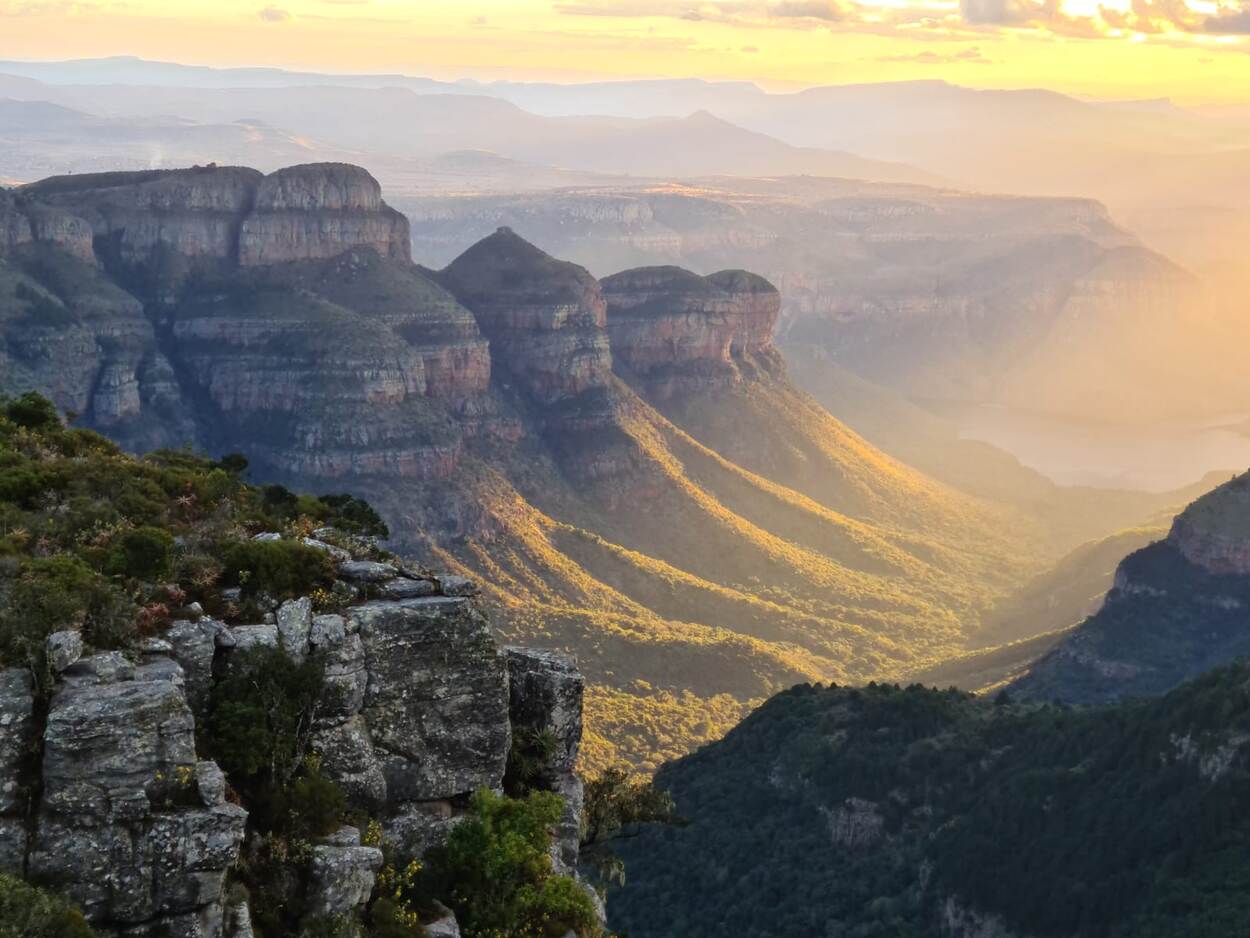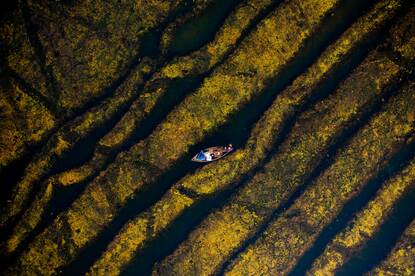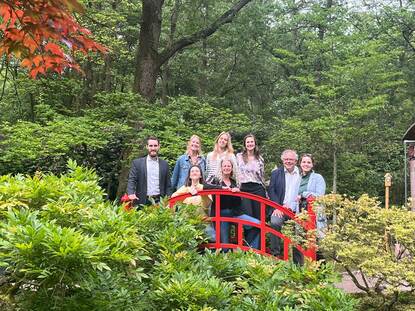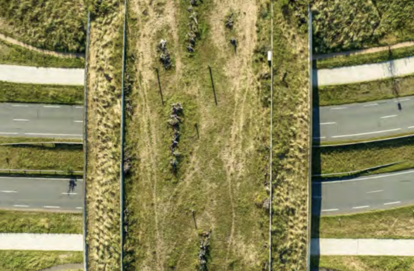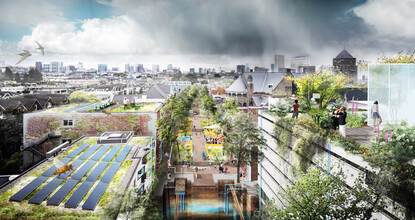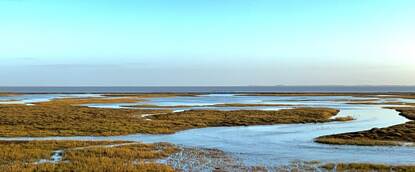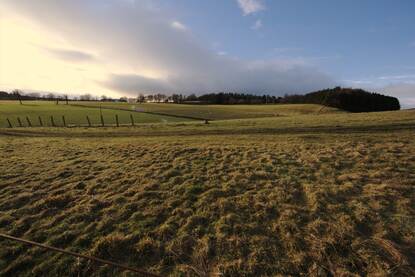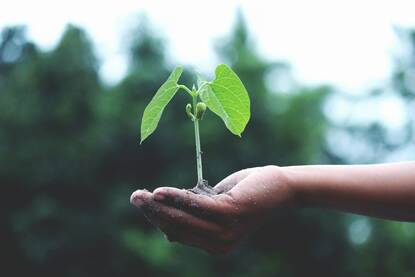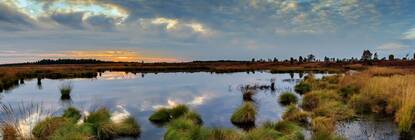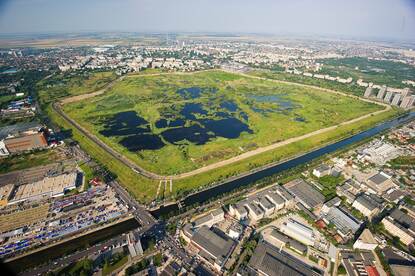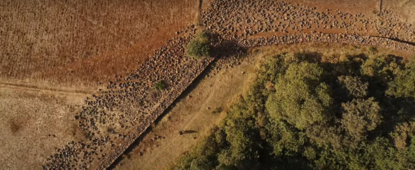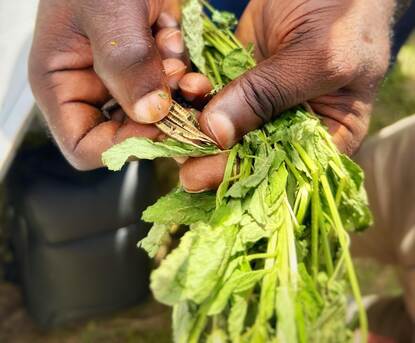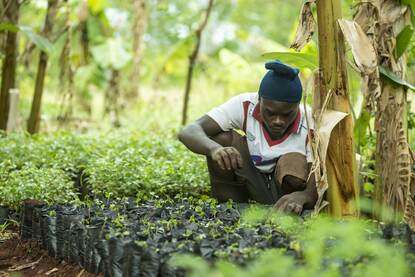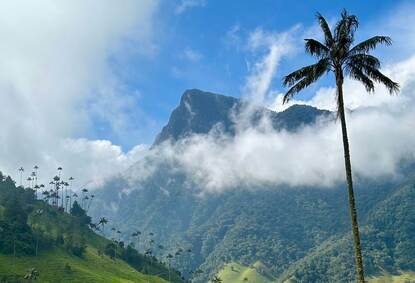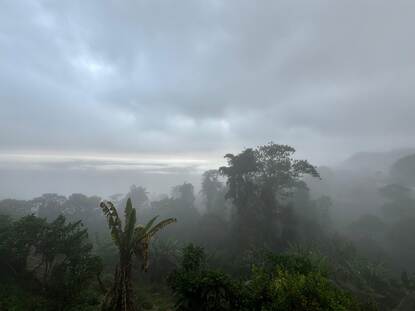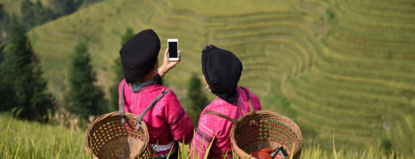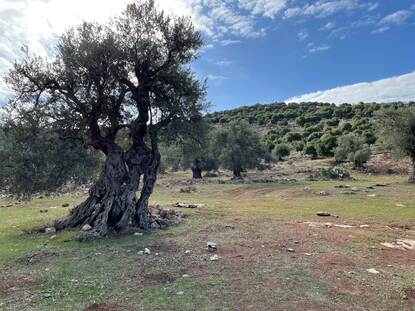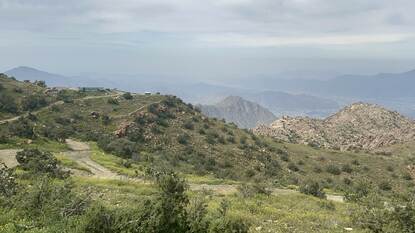Foto Nick Theron, Kruger2Canyons Biosphere Reserve
South Africa is one of the 17 megadiverse countries which make up more than two thirds of the world’s biodiversity. Tourists flock to witness the natural beauty of this land. However, challenges such as water management and invasive species threaten animal and plant life, as well as agricultural production. The Netherlands Agricultural Network (LAN) team at the Dutch Embassy in Pretoria is connecting local partners and identifying opportunities for Dutch knowledge and innovation to support efforts to protect the ecosystems of South Africa.
As the third most biodiverse country in the world, with over 95.000 known species, South Africa’s biodiversity not only sustains life but is also an important feature for the country’s economy, notably tourism. The country is home to three biodiversity hotspots, which exhibit remarkably different characteristics, despite being in the same country.
-
The Cape Floristic Region is the smallest, yet richest floral kingdom in the world. It is the only one found within a single country, and is a UNESCO world heritage site, housing over 6.000 endemic species.
-
South Africa is also home to roughly two thirds of the world’s succulent species, many of which are under threat of poaching. Many of these can be found in Namaqualand and the Klein Karoo regions, which form part of the Succulent Karoo hotspot.
-
Traversing the country, Maputaland-Pondoland-Albany extends from the Eastern Cape Province up into Swaziland and Mozambique. Here, almost a quarter of the 8.000 species are endemic.
There are two key stakeholders in the country who are responsible for preserving these natural treasures. The South African National Biodiversity Institute (SANBI) is the primary body responsible for research and reporting on biodiversity. In 2023, SANBI welcomed King Willem-Alexander at Kirstenbosch National Botanical Gardens, which condenses South Africa’s diverse plant life onto 528 hectares on the slopes of Table Mountain.
The second one is the Department of Forestry, Fisheries and Environment (DFFE) who last year introduced a tax incentive to encourage large landowners to preserve their natural land. However, these two stakeholders can’t do that on their own, with other challenges such as jobs and healthcare taking priority for most South Africans. To support biodiversity initiatives, the Netherlands Agricultural Network (LAN) team at the Dutch Embassy in Pretoria engages partners – such as farmers, landowners, NGOs, nature management organizations, local/provincial government, national parks and water users' associations – to identify opportunities for Dutch knowledge and innovation to make valuable contributions to local solutions.
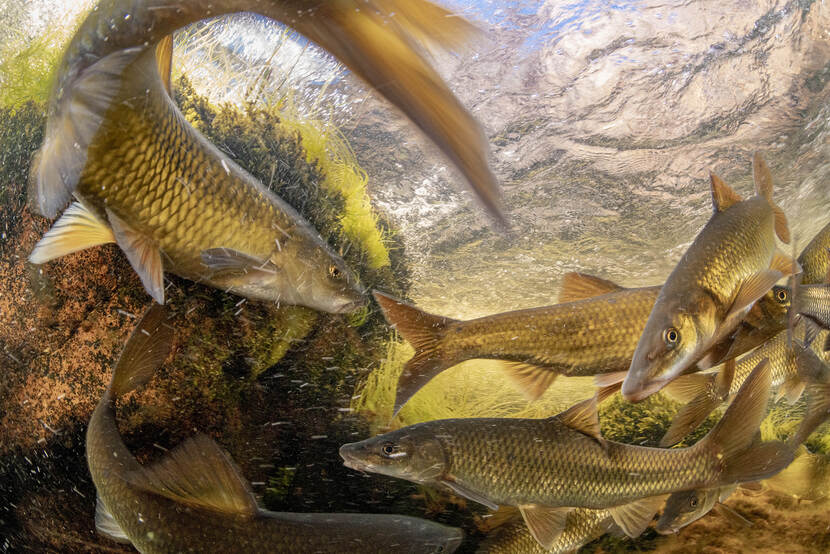
LAN team’s existing impact: Kruger 2 Canyons & Groot Letaba
The LAN team has been actively supporting local players to address water and biodiversity challenges in the Kruger2Canyons (K2C) Biosphere Reserve (UNESCO Man and the Biosphere Programme) which overlaps northern Maputaland-Ponodland-Albany and includes the Upper Letaba Catchment Strategic Water Area (SWSA). These strategic water areas make up 10% of land but supply 50% of all surface water. The catchment has significant economic value, being the country’s third largest citrus production area and exporter to the Netherlands.
Additionally, the Kruger National Park, located downstream, attracts almost two million tourists annually. However, water and biodiversity challenges affect these economic drivers. Land change and alien vegetation have desecrated the grasslands that store surface water and support local biodiversity. To sustain the natural beauty for tourism and conditions for agricultural production, restoring these natural habitats is crucial.
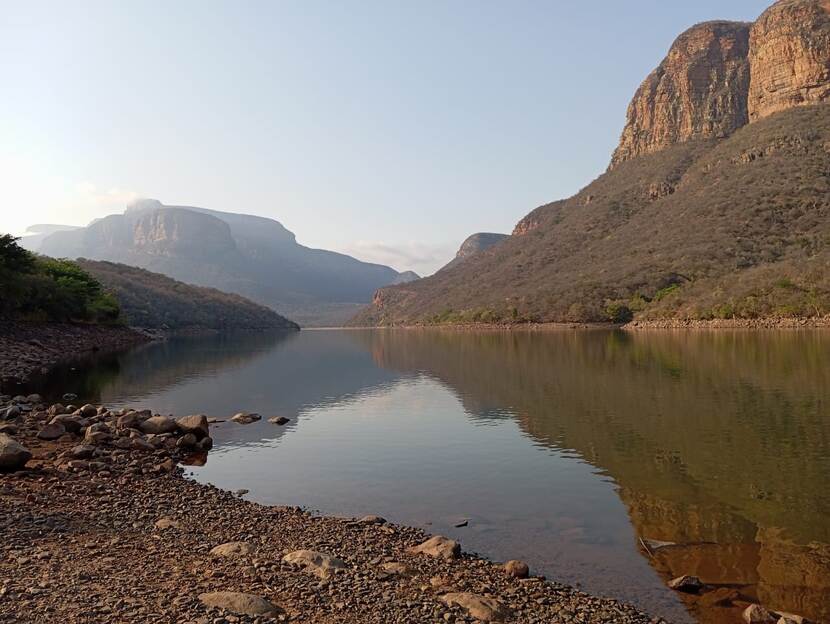
Sharing the Dutch integrated-working approach and water expertise
Sharing the integrated way in which Dutch governments, businesses and knowledge institutes work together (Dutch Diamond approach), the LAN team has brought together commercial farmers, the Kruger2Canyons Biosphere Reserve, the Letaba Water Users' association and several NGOs, and landowners, who previously worked in silos. They have supported a bottom-up process whereby these partners have developed a Just Landscape Transition Plan (JLTP). This plan paves the way for local economic development, while paying attention to the local water and biodiversity needs. It includes implementable, nature-based solutions that deliver concrete short-term results.
Stakeholders identify their own solutions and indicate where Dutch expertise is needed. For example, employing the expertise of Partners for Water or using GeoData’s (a consortium including the Netherlands Space Office) satellite technology to better understand landscapes.
The biodiversity component of the JLTP involves restoration of inundation areas (including clearing invasive vegetation) and restoring connection zones/green corridors between farms and rivers. These actions result in clean water downstream in the Kruger Park.
Restoring inundation areas involves reestablishing grasslands which are critically endangered but not well protected. Over 75% of this area is transformed, including alien forests, which compromise the catchment’s ability to recharge rivers and aquifers. However, natural grasslands can act like sponges, slowly releasing rainwater downstream. Therefore, restoring these is key to preserving the water balance and supporting biodiversity.
Through the LAN team, sharing our integrated-working approach and water expertise, local partners are now working together on a common vision to address water and biodiversity challenges. With these lessons learnt – from implementing the integrated approach to working to addressing the water & biodiversity challenges – the LAN team can further contribute to preserving biodiversity by sharing these valuable experiences with partners in other regions and addressing similar challenges, such as in the Olifants-Doring catchment.
‘Stakeholders identify their own solutions and indicate where Dutch expertise is needed’
Future impact: Source-2-sea, Olifants-Doring catchment
Spanning over five and a half million hectares, Olifants-Doring straddles the Cape Floristic Region and Succulent Karoo. Its rivers boast South Africa’s highest proportion of endemic freshwater fish and the Olifants estuary is an Important Bird Area (IBA). However, dry seasons in the region are becoming longer and demand for water is 10% higher than availability, resulting in frequent conflict among users and insufficient water for local biodiversity. Therefore, water management is crucial for sustaining ecosystems and the agricultural economy, where citrus, deciduous fruits and rooibos tea are cultivated.
WWF has been working with Freshwater Research Centre (FRC) and Phuhlisani for over a year developing the Source-2-Sea project. This project aims to develop better land and water management practices to address these challenges.
In the upper reaches of the Doring Catchment in the Koue Bokkeveld, management strategies that have been introduced include clearing invasive vegetation and rehabilitating habitat for endangered freshwater species. Source-2-Sea adopts a comprehensive 'whole catchment' approach, integrating water management technologies to enhance resilience and ensure ecological health across the entire catchment. This includes the Water Balance Tool, which monitors water availability and usage in the rivers of upper parts of the Catchment. This can be used to ensure that water users (farmers, local communities) are not using too much water, thereby sharing it equally with other water users further downstream. This is important not only to ensure sufficient water downstream for both farmers but also local biodiversity. Endemic freshwater fish are threatened by lack of water in the rivers.
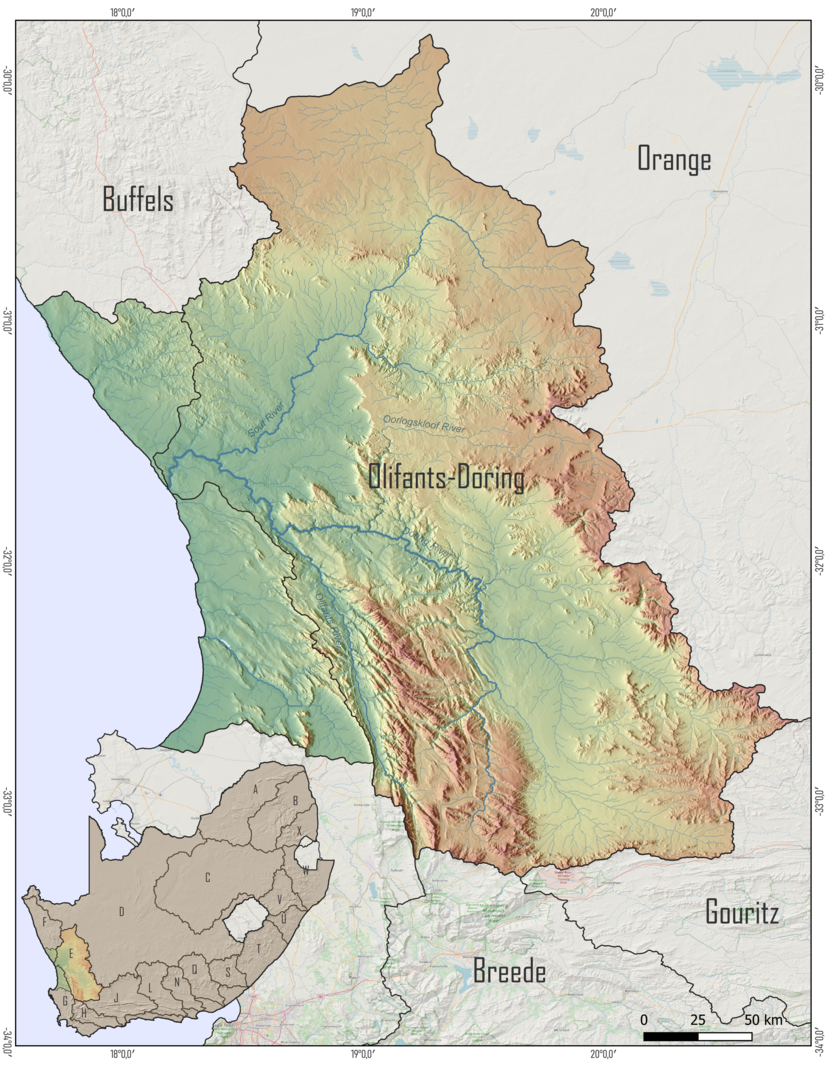
Dutch knowledge and innovations supporting locally based solutions
Following WWF’s involvement for the 2023 state visit, the LAN team has explored opportunities for Dutch knowledge and innovations to contribute to Source-2-Sea. Currently, the team's cooperation involves three actions, that feed into a longer-term strategic partnership:
-
GeoData uses satellite data to create models and analyze the landscape to support decision making in the catchment.
-
FRC is conducting stakeholder analyses, which the Dutch Embassy will support through facilitation of workshops.
-
Providing capacity for farmers to restore non-arable land to nature reserves. This contributes to South Africa’s commitment to the Global Biodiversity Framework, conserving 30% by 2030.
There is a commitment by various stakeholders to preserve the country’s natural beauty. Using Dutch knowledge, the LAN team together with the Dutch Embassy actively engage with local partners to find opportunities for Dutch innovations to support locally based solutions. In both K2C and Source-2-Sea, the link between water and biodiversity is clear. Invasive vegetation and overuse of water threaten natural ecosystems. However, with effective stakeholder engagement, quality information and clear visions, these challenges are being addressed.
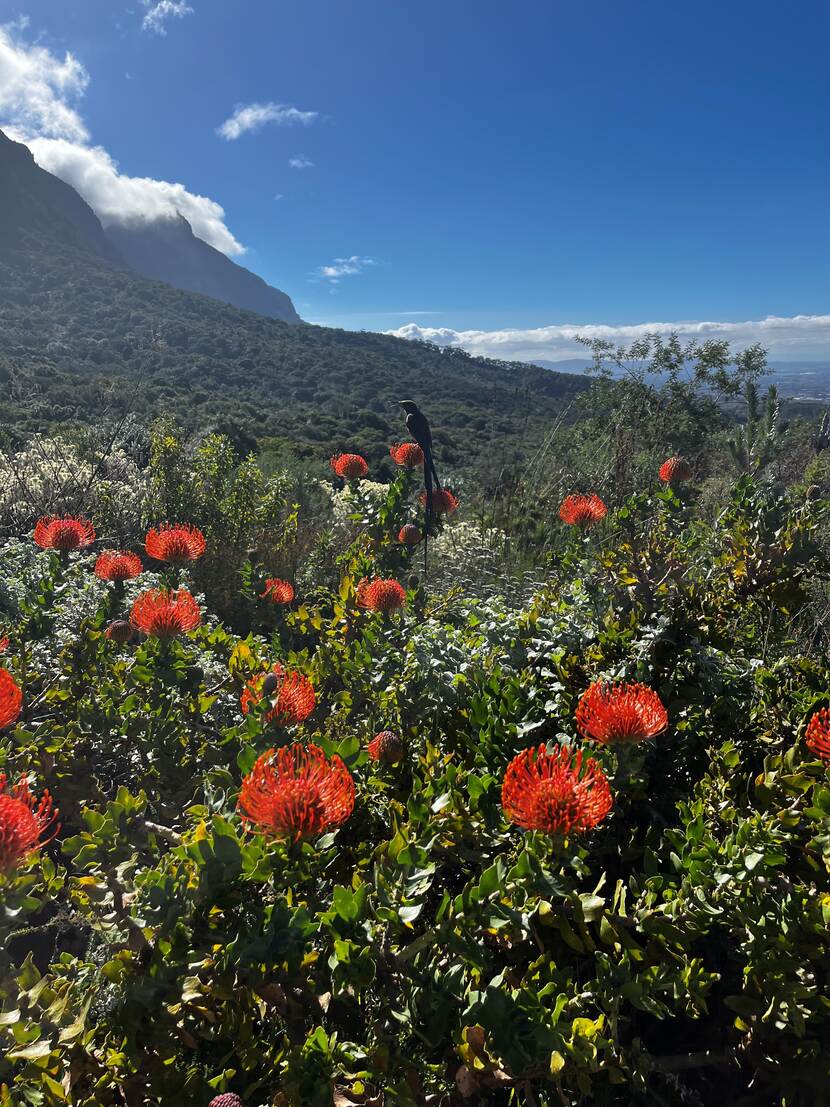
More information
Would you like to know more about stakeholder and water management and biodiversity in South Africa? You can visit the country page of South Africa at the website Agroberichtenbuitenland.nl of the Dutch Ministry of Agriculture, Fisheries, Food Security and Nature. You can also send an email to the LAN team at the Dutch Embassy in Pretoria: pre-lvvn@minbuza.nl.
